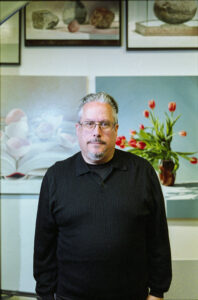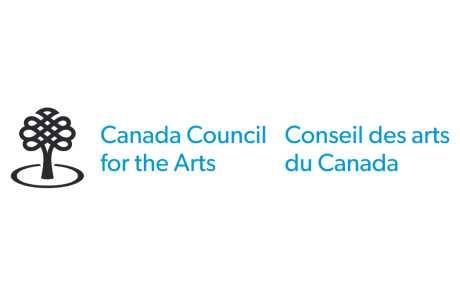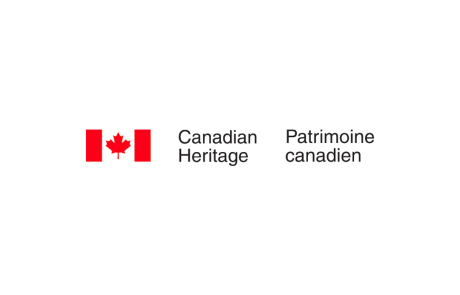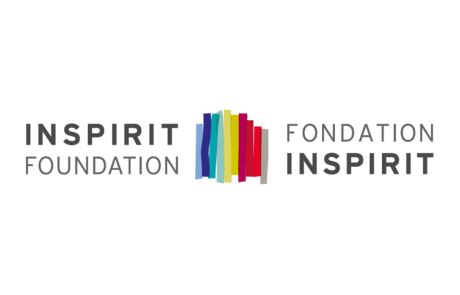Scouting Venice
Despite the singing of cheery gondoliers and their accordion-playing compatriots below my window, I slept off the jet lag, and so missed the Maori warriors dancing in Venice’s San Marco Square. My more durable traveling companion, Guy Sioui Durand, was up and at it. He assures me that the anomalous scene, at this former staging ground for the crusades and empire, did occur and was inspiring.
Guy (Wendake, Quebec) Patricia Deadman (Woodstock, Ontario), Leanne L’Hirondelle (Ottawa), Steven Loft (Ottawa) and I (Regina, SK), were members of a scouting party of Aboriginal curators led by Jim Logan and sponsored by the Canada Council. The Venice Biennale is the art world’s most prestigious event and I, for one, was awed by the odd site: an almost painfully beautiful museum of a city improbably built on dozens of small islands, hosting some of the strangest art and richest people on the planet.
While we were there to be overwhelmed and astonished by the national pavilions at the Gardini and Arsenal and exhausted by searching for the most interesting off-site exhibitions (In-Finitum, Glass Stress, Mona Hartoum*.), we were also hunting for Indigeneity. There were hopeful signs in the form of Canadian Dean Baldwin’s “Algonquin Tiki Tiki Hut.” Among their fun interventions, Baldwin and his Reverse Pedagogy crew paddled canoes through the canals. Alas, it was a Red herring. The hut only exploited the Algonquin reference to add some Canuck colour to the project: no actual Indians were involved in the event.
The most substantial Indigenous presence was Australia’s off-site exhibition, One Removed, curated by Felicity Fenner, which included Vernon Ah Kee’s remarkable Cant Chant (Wegrewhere). A year ago, Jim Logan and the Canada Council shepherded a previous contingent of curators to Sydney, where we met Vernon. Thanks to that connection, curator Michelle Lavallee (Mackenzie Art Gallery, Regina) was able to coax him to the Prairies for a month-long artist residency and exhibition this summer. Cant Chant includes wall texts, customized surfboards and a surfing movie. Tough, funny and poignant, the show is about negotiating contemporary Aboriginal identities, honouring those who made it possible and messing with those who resist. The show translates well to Canadian Indigenous experience.
Perhaps the most remarkable moment of Aboriginality was curator Nancy Marie Mithlo’s exhibition of photographic prints by Native American artists Tom Jones and Andrea Carlson, Rendevoused: to go somewhere. The show was accompanied by a panel discussion where Jones explained that his photographs of what I thought were German re-enactors in ‘Indian’ drag, turned out to be mid-Western Americans with some Aboriginal ancestry who were using dress-up as a means to imaginatively reconnect with their culture. The works are sincere and poignant, a little sad, a little funny and deeply puzzling. Amid the drama and scale of other displays, the small storefront style space was modest and miraculous.
For several years, the generous and intelligent Mithlo (University of Wisconsin, Madison), has nurtured a relationship with the Università Ca’ Foscari Venezia who provided the space. We learned from her and from Tamara Andruszkiewicz (who was, as of our meeting, the coordinator of the Canadian Pavilion for 16 years), just how costly and difficult it is to mount even a small show. We were curious to know what it would take to set up our own exhibition. First, you have to raise about 25,000 euros for the privilege of being recognized as an off-site entry, get in the catalogue, guidebooks and maps. A simple space might cost another 10,000+ euros a month *the Biennale runs five months. Then you have to ship the work, refurbish the space, pay staff and their accommodations (very expensive), and pay the artists (?!). The budget for the Canadian pavilion, which showed four projections by Mark Lewis, had a budget of $1.3 million*peanuts compared to most other pavilions. It is a daunting prospect, but worth the contemplation.
After Venice, the Basel art fair was the next stop for the culturati whose ranks we had temporarily joined. Billions of dollars worth of art are housed in hundreds of stalls for throngs of avid cool-scouts and shoppers. It is like the Calgary Stampede art fair except much, much bigger and without Indians. The money, competition, beauty and strangeness beggar description.
I am still absorbing the shock of this, my first trip to Europe and artopia. The history, culture and wealth were overwhelming. It was important to experience another aspect of the culture machine first hand. Just as important was the opportunity to see and debate about it with fellow Aboriginal curators. After our mission to Australia in 2008, I was invited back eleven months later to do a keynote at a conference on Indigenous art after the Apologies, and I am working toward a traveling exhibition of Australian and Canadian Aboriginal artists. As a delegate, I met artists and curators I might not have otherwise had an audience. I trust that this program will continue and increase in ambition and increase the ambitions of those invited.
David Garneau
June 30, 2008
 David Garneau (Métis Nation of Saskatchewan) is a Professor of Visual Arts at the University of Regina. He is a painter, curator, and critical art writer who engages in creative expressions of Indigenous contemporary ways of being. Garneau curated Kahwatsiretátie: The Contemporary Native Art Biennial (Montreal, 2020) with assistance from Faye Mullen and Rudi Aker; He co-curated, with Kathleen Ash Milby, Transformer: Native Art in Light and Sound, National Museum of the American Indian, New York (2017). With Tess Allas, he co-curated With Secrecy and Despatch, for the Campbelltown Art Centre, Sydney, Australia (2016). He and Michelle Lavallee curated Moving Forward, Never Forgetting at the Mackenzie Art Gallery (2015). Garneau has given keynotes on mis/appropriation; re/conciliation; public art; museum displays; and Indigenous contemporary art. He presented, Dear John, a performance featuring the spirit of Louis Riel meeting with John A. Macdonald statues in Regina, Kingston, and Ottawa. David recently installed a large public artwork, the Tawatina Bridge paintings, in Edmonton. His recent still life paintings, Dark Chapters, curated by Arin Fay, will tour Canada in 2025. In 2023, Garneau was awarded the Governor General’s Award in Visual and Media Art: Outstanding Achievement and was inducted into the Royal Society of Canada.
David Garneau (Métis Nation of Saskatchewan) is a Professor of Visual Arts at the University of Regina. He is a painter, curator, and critical art writer who engages in creative expressions of Indigenous contemporary ways of being. Garneau curated Kahwatsiretátie: The Contemporary Native Art Biennial (Montreal, 2020) with assistance from Faye Mullen and Rudi Aker; He co-curated, with Kathleen Ash Milby, Transformer: Native Art in Light and Sound, National Museum of the American Indian, New York (2017). With Tess Allas, he co-curated With Secrecy and Despatch, for the Campbelltown Art Centre, Sydney, Australia (2016). He and Michelle Lavallee curated Moving Forward, Never Forgetting at the Mackenzie Art Gallery (2015). Garneau has given keynotes on mis/appropriation; re/conciliation; public art; museum displays; and Indigenous contemporary art. He presented, Dear John, a performance featuring the spirit of Louis Riel meeting with John A. Macdonald statues in Regina, Kingston, and Ottawa. David recently installed a large public artwork, the Tawatina Bridge paintings, in Edmonton. His recent still life paintings, Dark Chapters, curated by Arin Fay, will tour Canada in 2025. In 2023, Garneau was awarded the Governor General’s Award in Visual and Media Art: Outstanding Achievement and was inducted into the Royal Society of Canada.
Photo credit: Mika Abbott









